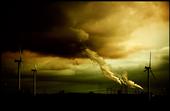TRAIN_Calling All Angels
Add to My Profile | More Videos
"The scientific understanding of climate change is now sufficiently clear to justify nations taking prompt action." -Joint [11] Science Academies’ Statement: Global Response to Climate Change, 2005 "Greenhouse gases are accumulating in Earth’s atmosphere as a result of human activities, causing surface air temperatures and subsurface ocean temperatures to rise." -Climate Change Science, U.S. National Academy of Sciences, 2001
WHAT IS GLOBAL WARMING?
"Carbon dioxide and other gases warm the surface of the planet naturally by trapping solar heat in the atmosphere. This is a good thing because it keeps our planet habitable. However, by burning fossil fuels such as coal, gas and oil and clearing forests we have dramatically increased the amount of carbon dioxide in the Earth’s atmosphere and temperatures are rising.The vast majority of scientists agree that global warming is real, it’s already happening and that it is the result of our activities and not a natural occurrence.1 The evidence is overwhelming and undeniable.
We’re already seeing changes. Glaciers are melting, plants and animals are being forced from their habitat, and the number of severe storms and droughts is increasing.
The number of Category 4 and 5 hurricanes has almost doubled in the last 30 years.
Malaria has spread to higher altitudes in places like the Colombian Andes, 7,000 feet above sea level.
The flow of ice from glaciers in Greenland has more than doubled over the past decade.
At least 279 species of plants and animals are already responding to global warming, moving closer to the poles.
If the warming continues, we can expect catastrophic consequences.
Deaths from global warming will double in just 25 years -- to 300,000 people a year.
Global sea levels could rise by more than 20 feet with the loss of shelf ice in Greenland and Antarctica, devastating coastal areas worldwide.
Heat waves will be more frequent and more intense.
Droughts and wildfires will occur more often.
The Arctic Ocean could be ice free in summer by 2050
More than a million species worldwide could be driven to extinction by 2050.
There is no doubt we can solve this problem. In fact, we have a moral obligation to do so. Small changes to your daily routine can add up to big differences in helping to stop global warming. The time to come together to solve this problem is now – TAKE ACTION
Click here for Myspace glitter graphics and Myspace layouts
